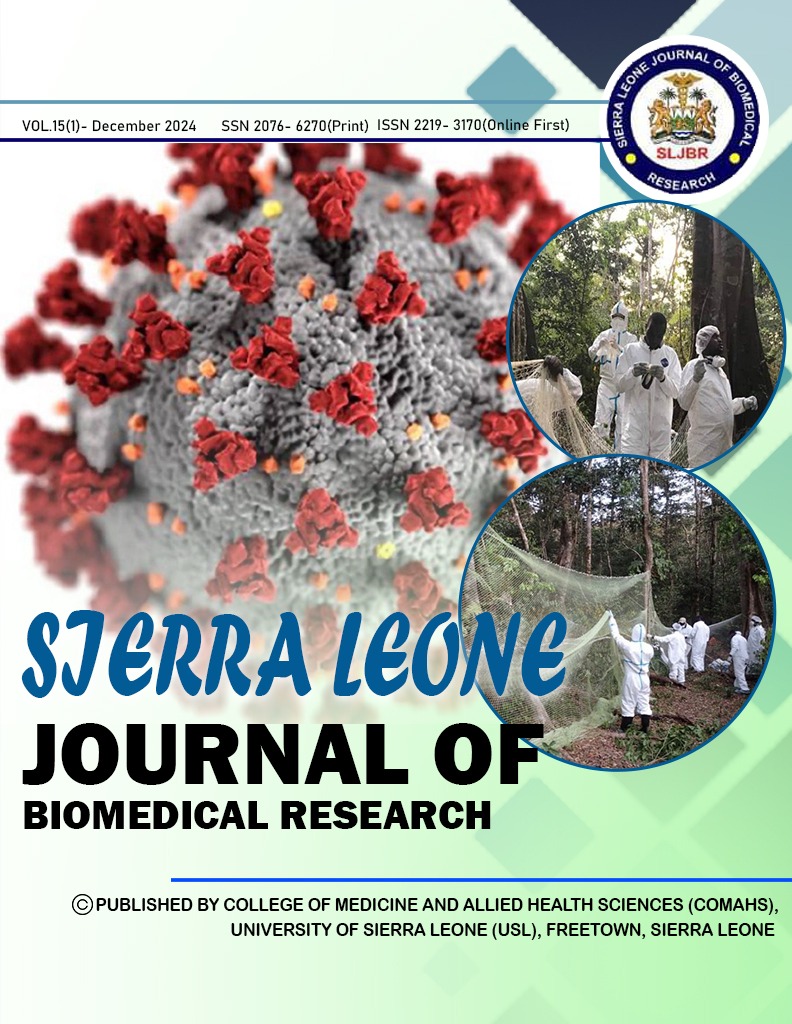MULTISECTORAL ONE HEALTH BASED JOINT RISK ASSESSMENT OF LASSA FEVER VIRUS IN SIERRA LEONE
DOI:
https://doi.org/10.4314.1.4Abstract
Lassa fever (LF) is a viral hemorrhagic disease found in sub-Saharan Africa responsible for up to 300,000 cases and 5,000 deaths annually. LF is highly endemic in Sierra Leone, particularly in its Eastern Province. Acute LF cases most frequently presented during the dry season and case fatality rates (CFRs) among acute cases also peaked during the dry season. However, joint risk assessments (JRA) to determine likelihood of LF exposure and impacts on various communities has never been done. To fully understand the possible risks associated with LF virus disease in various communities, a multisectoral transdisciplinary One Health base Joint Risk Assessment (JRA) supported by FAO, OIE and WHO was conducted. The objective was to provide a basis for management or communications decisions regarding LF. JRA was done by trained experts drawn from the ministry of health and sanitation, ministry of agriculture, ministry of environment, and universities. The underlying assumptions for the JRA was the gap in knowledge on the introduction of LFV into Sierra Leone, animal reservoirs, and modes of transmission. Risk framing of the LF hazard was based on it endemicity in the country and increase in Lassa Fever incidence in non-endemic areas, coupled with limitations in clinical care and inadequate health worker safety. Following hazard and exposure characterization, a risk matrix was utilized to qualitatively determine the likelihood (negligible, low, moderate, high) of exposure and impact (negligible, minor, moderate, and severe) of the exposure on individuals and community. The JRA risk matrix assessment showed for instance that the likelihood of a health worker in a health facility being exposed to the LF Virus (LFV) infection is high, while impact is severe (CFRs of LF in humans will be high, with high disability and may cause epidemics), and level of Uncertainty is low (reliable data is available, although not specific to health care worker). Likewise, the likelihood of rodents infecting at least one person in Sierra Leone with Lassa Virus is high, while the Impact is moderate; due to availability of routine surveillance capacity, case management structures, and laboratory capacity, and level of Uncertainty is very low. This is consistent with the goal of the JRA and OH approach that suggest different exposure sources are associated with varying risks to humans and communities. Overall, the multi-sectoral OH JRA will inform policy makers and help formulate integrated action for detection, prevention, preparedness, and response to LF virus disease in Sierra Leone.

